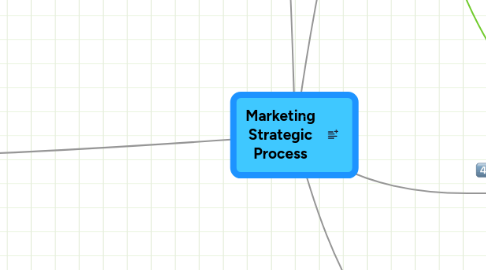
1. External analysis
1.1. Macro-environment analysis
1.1.1. PESTEL
1.2. Market research
1.3. Demand analysis
1.3.1. Macro
1.3.1.1. Quantification
1.3.1.1.1. Objective
1.3.1.1.2. Data availability
1.3.1.2. Qualification
1.3.1.2.1. Penetrated (covered) market
1.3.1.2.2. Served (targeted) market
1.3.1.2.3. Available market
1.3.1.2.4. Potential market
1.3.2. Micro
1.3.2.1. B2C
1.3.2.1.1. Consumer behavior
1.3.2.1.2. Needs
1.3.2.2. B2B
1.3.2.2.1. Models
1.4. Offering (task environment) analysis
1.4.1. Porter's 5 forces
2. Internal analysis
2.1. Value chain
2.1.1. SWOT
3. Segmentation
3.1. Macro
3.1.1. ABELL
3.1.1.1. Uses
3.1.1.2. Customers
3.1.1.3. Technologies
3.2. Micro
3.2.1. Process choice
3.2.1.1. Mathematic
3.2.1.1.1. Survey
3.2.1.1.2. Data analysis
3.2.1.1.3. Segment profiling
3.2.1.2. Heuristic
3.2.1.2.1. Sucessive elimination
3.2.1.2.2. 2 phase approach
3.2.1.2.3. Multi-phase approach (nested)
3.2.2. Variables selection
3.2.2.1. By consumer
3.2.2.1.1. B2B
3.2.2.1.2. B2C
3.2.2.2. By product attributes
3.2.3. Segments determination
3.2.3.1. Characteristics
3.2.3.1.1. Durable
3.2.3.1.2. Homogeneous
3.2.3.1.3. Measurable
3.2.3.1.4. Important
3.2.3.1.5. Accesible
3.2.4. Validation
3.2.5. Segments description
4. Targeting
4.1. Marketing strategy
4.1.1. Undifferenciated
4.1.2. Differenciated
4.1.3. Concentrated
4.2. Coherence with growth strategy
4.2.1. Market penetration
4.2.2. Product development
4.2.3. Market development
4.2.4. Diversification
4.3. Coherence with business strategy
4.3.1. Undifferenciated
4.3.2. Differenciated
4.3.3. Concentrated
5. Positioning
5.1. Levels
5.1.1. Product
5.1.1.1. Perceptual map
5.1.2. Portfolio
5.1.2.1. BCG matrix
5.1.2.2. McKinsey matrix
